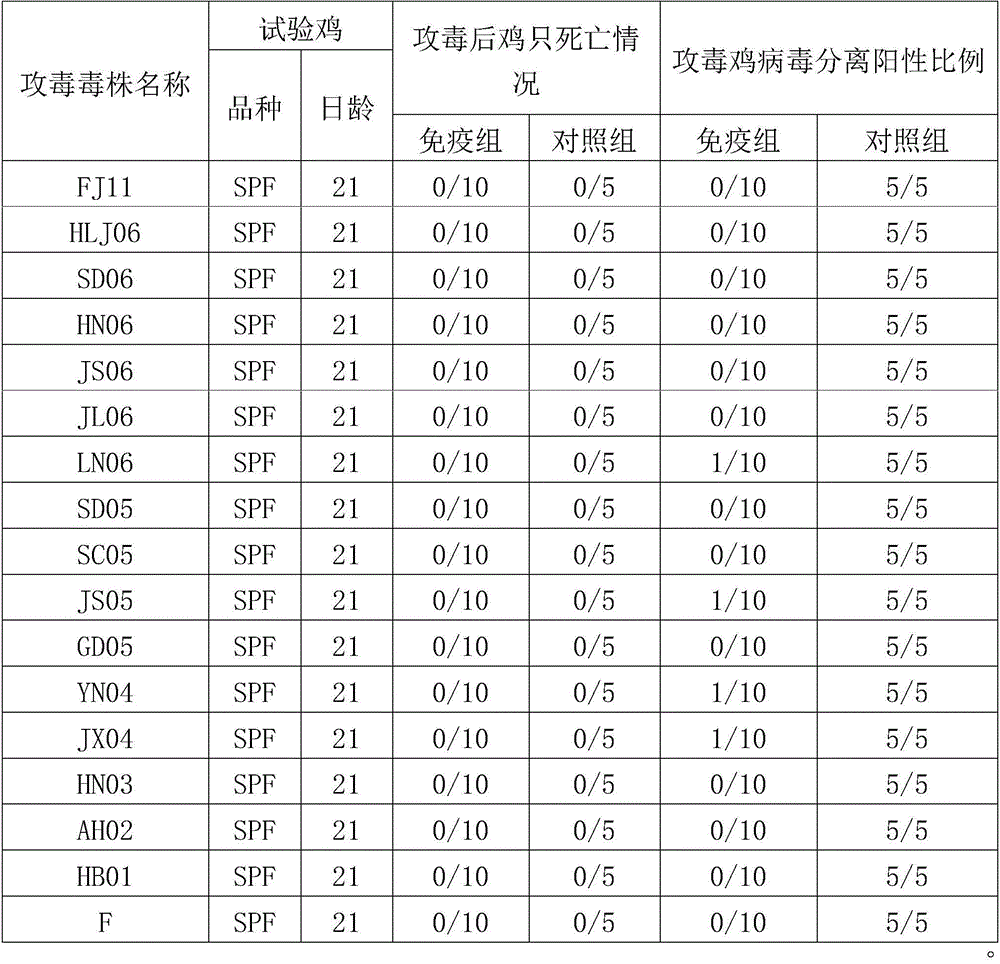Avian influenza virus strain
An avian influenza virus and vaccine technology, applied in the directions of viruses, antiviral agents, virus antigen components, etc., can solve problems such as uncontrollable epidemic development, and achieve the effects of good safety, good immunogenicity and high titer
- Summary
- Abstract
- Description
- Claims
- Application Information
AI Technical Summary
Problems solved by technology
Method used
Image
Examples
Embodiment 1
[0018] Embodiment 1: Screening of H9 subtype avian influenza virus strain
[0019] 1. Epidemiological survey Since the discovery of H9 subtype avian influenza in northern my country in 1998, we have been tracking the prevalence of H9 subtype avian influenza and virus mutation. In recent years, avian influenza has appeared in many areas Symptoms or dead chickens, after a large number of epidemiological investigations, in 2015, we successfully isolated a strain of H9 subtype avian influenza virus from chickens in a chicken farm in Fujian.
[0020] 2. Virus isolation AIV was isolated according to the method reported in the literature. Add the disease material to the normal saline containing double antibody at a ratio of 1:5 (w / v), grind it to make a suspension, centrifuge at 1000r / min for 5 minutes, take the supernatant and inoculate the allantoic cavity of 10-11-day-old SPF chickens Embryos, 0.2ml per embryo, hatched at 36°C-37°C for 3-4 days, irradiated the embryos twice a day,...
Embodiment 2
[0030] Embodiment 2: Preparation of H9 subtype avian influenza antigen
[0031] 1 Inoculation Take the virus seed for production and make appropriate dilution with sterilized physiological saline (such as 10 -3 or 10 -4 ), according to the "Instructions for the Use of Automatic Inoculation Machine", inoculate 10-11-day-old susceptible chicken embryos, 0.1ml per embryo, seal the pinhole after inoculation, and continue incubation at 36-37°C without turning the embryos.
[0032] 2 Incubation and observation After inoculation of the chicken embryos, the embryos were illuminated once a day, and the chicken embryos that died 48 hours ago were discarded. Thereafter, the embryos were photographed once every 4-6 hours, and the dead chicken embryos were taken out at any time until 96 hours, no matter whether they were dead or not, all of them were taken out, the air chamber was upright, and cooled at 2-8°C for 12-24 hours.
[0033] 3 Harvesting Take out the cooled chicken embryos, and...
Embodiment 3
[0040] Embodiment 3: the preparation of vaccine
[0041] 1 Oil phase preparation Take 95 parts of mineral oil and 1 part of aluminum stearate, mix them evenly in the oil phase preparation tank and heat to 80°C, add 5 parts of Siben-80, and keep it for 40 minutes when the temperature reaches 115°C , and set aside after cooling.
[0042] 2 Preparation of the aqueous phase Mix the inactivated H9 subtype avian influenza virus venom at a ratio of 1:2. Take 95 parts of mixed antigen solution and 5 parts of sterilized Tween-80, and mix well to completely dissolve Tween-80.
[0043] 3 Emulsification Take 2 parts of the oil phase and put them into the emulsification tank, start the motor, and stir at a slow speed. At the same time, slowly add 1 part of the water phase, and then stir at 3500r / min for 30-40 minutes. After emulsification, take 10ml of the vaccine and put it into a centrifuge tube, centrifuge at 3000r / min for 15 minutes, and the water precipitated at the bottom of the tu...
PUM
 Login to View More
Login to View More Abstract
Description
Claims
Application Information
 Login to View More
Login to View More - R&D
- Intellectual Property
- Life Sciences
- Materials
- Tech Scout
- Unparalleled Data Quality
- Higher Quality Content
- 60% Fewer Hallucinations
Browse by: Latest US Patents, China's latest patents, Technical Efficacy Thesaurus, Application Domain, Technology Topic, Popular Technical Reports.
© 2025 PatSnap. All rights reserved.Legal|Privacy policy|Modern Slavery Act Transparency Statement|Sitemap|About US| Contact US: help@patsnap.com

